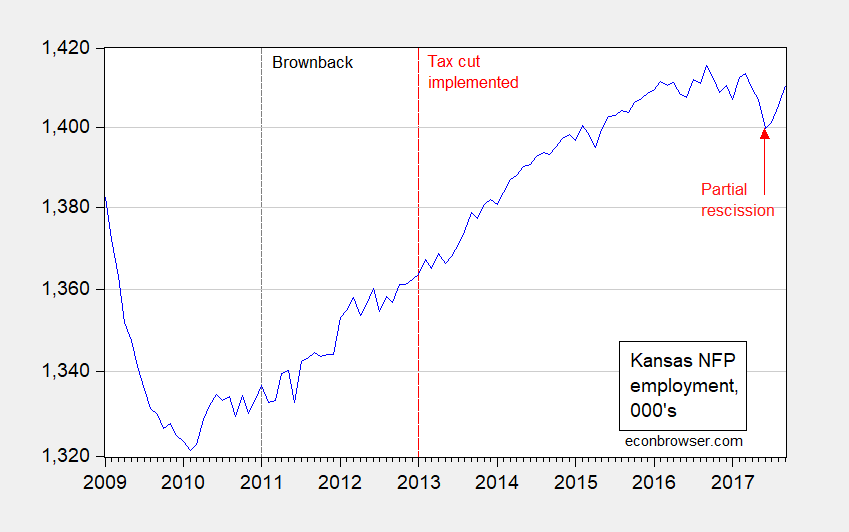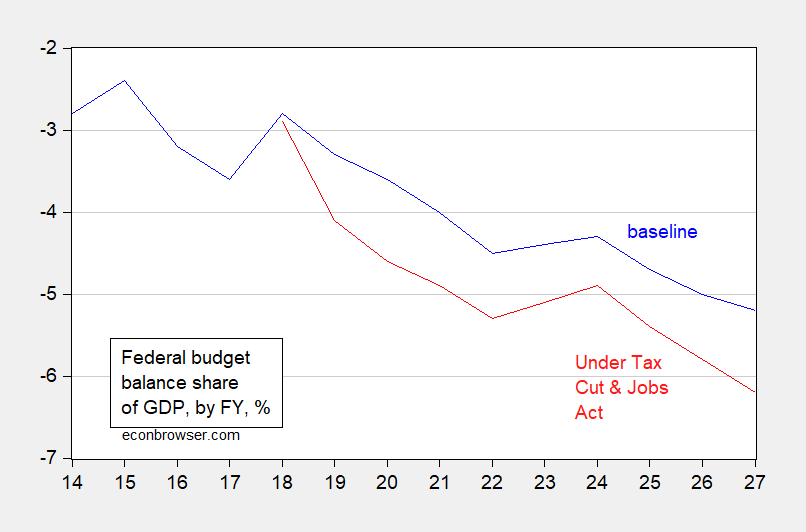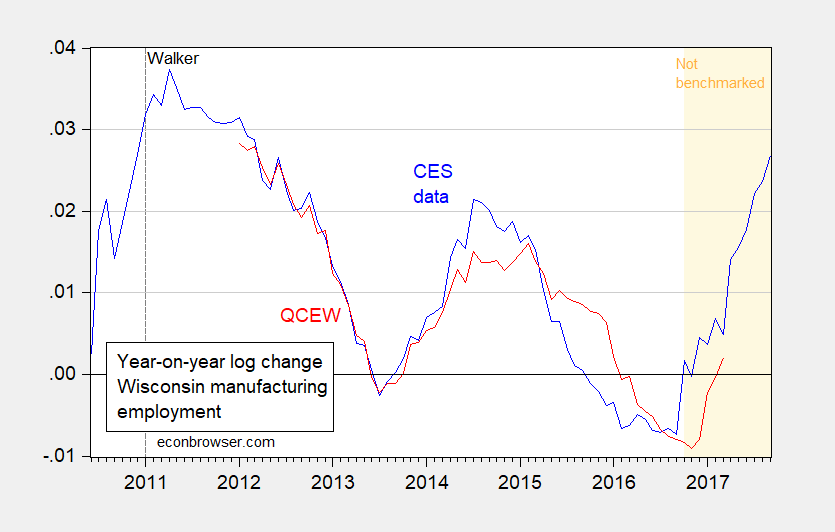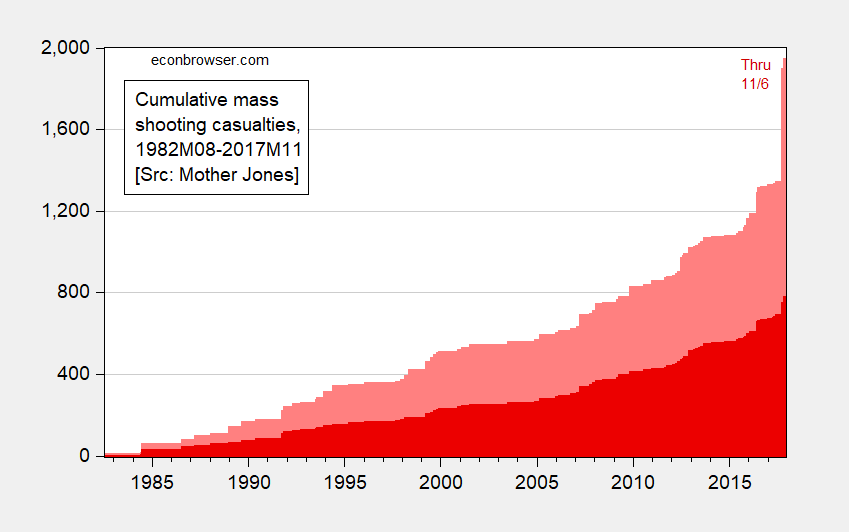The Wisconsin Department of Workforce Development (DWD) today released new employment data for October. Manufacturing employment surged in the establishment data, but the contemporaneously released additional three months of data from the Quarterly Census of Employment and Wages (QCEW) (through June) suggests slower manufacturing growth.
Distributional Consequences of the Tax Cuts and Jobs Act
Here’s a metaphorical picture:

Source: AP/Jacquelyn Martin via Garber.
Continue reading
The Real Adrenaline Shot? Kansas since the End of the Brownback Experiment
Kansas employment nosedived in June, and has bounced back since the Brownback tax cut was rolled back. Kansas employment is catching up with Missouri after lagging. The Philadelphia Fed’s coincident and leading indices also point to a recovery in Kansas.

Figure 1: Nonfarm payroll employment in Kansas (blue), on log scale. Source: BLS.
CBO/JCT on Deficits and Debt under the Tax Cuts and Jobs Act
And resulting impending cuts to Medicare.
Per CBO letter released yesterday.

Figure 1: Federal budget balance to GDP, by FY, baseline (blue), and under Tax Cut and Jobs Act (red). Source: CBO.
Quarterly Census Data on Wisconsin Manufacturing: More on Premature Triumphalism
Recall the Walker Administration termed the Quarterly Census of Employment and Wages (QCEW) the “gold standard” of employment measures. I thought it useful to compare the QCEW figures on manufacturing against the establishment survey. Here is the twelve month growth rate under the two measures (the QCEW data is not seasonally adjusted).

Figure 1: 12 month log difference in Wisconsin manufacturing payroll employment from establishment survey (CES) (blue), and from Quarterly Census of Employment and Wages (QCEW) (red). Light brown shaded area denotes period where CES data has not been benchmarked using QCEW data. Source: BLS, DWD and author’s calculations.
Guest Contribution: “The Long-term Job Decline in US Manufacturing”
Today, we present a guest post written by Jeffrey Frankel, Harpel Professor at Harvard’s Kennedy School of Government, and formerly a member of the White House Council of Economic Advisers.
How’s Wisconsin’s Economy Doing?
Employment underperforming the February Budget forecast; output too. Philadelphia Fed indices say activity is flat. A time series forecast using forward-looking indicators implies a continued rise in the unemployment rate.
Defining Crowding Out in an Open Economy
Gavin Ekins argues that it’s Time to Shoulder Aside “Crowding Out” As an Excuse Not to Do Tax Reform. From the introduction:
Ethnic Diversity Measured
In trying to explain why Canada has lower gun death rates than the US, Bruce Hall boldly asserts that Canada is more ethnically homogenous than the US. I wonder in this data-rich era why people make bold assertions like this.
Cumulative Mass Shooting Casualties in America as of November 6th

Figure 1: Cumulative sum of mass shooting casualties, beginning in 1982M08; deaths (red), wounded (pink). October observation for data through 11/6. Source: Mother Jones.